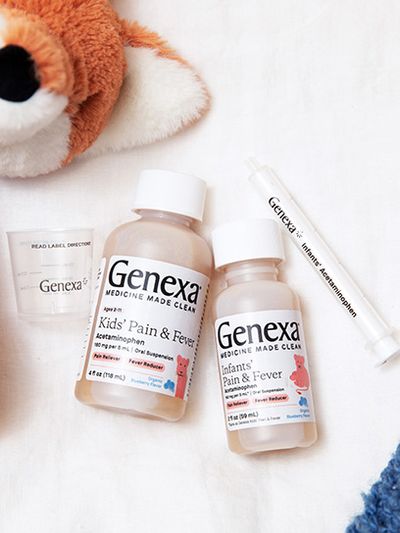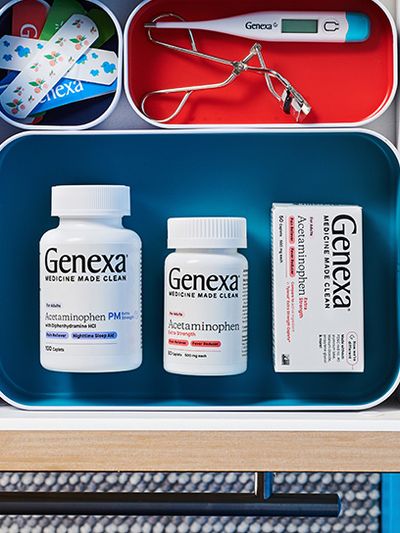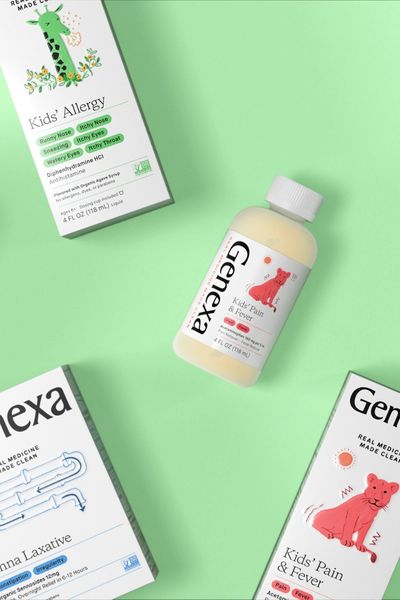Fever Blisters: What They Are And How To Deal With Them
Treating Your Fever Blisters
Table of contents:
You might call them cold sores, but either way, fever blisters can be a real pain. These small, fluid-filled bumps form on your lips and around your mouth, leaving you with an uncomfortable, unsightly blemish front and center.
But just what are fever blisters, exactly, and where do they come from? That’s precisely what you’ll learn in this helpful guide. The more you know about fever blisters and better understand them, you will be able to combat these unwelcome sores.
What Are Fever Blisters?
Quite simply, fever blisters are a viral infection. The herpes simplex virus type 1 (HSV-1) is the most common to cause fever blisters, while the herpes simplex virus type 2 (HSV-2) is the lesser of the two.
When fever blisters form, they usually do so in patches that are closely grouped together. Once these blisters break, you’re likely to be left with a scab on or around your mouth. On average, fever blisters heal on their own in a couple of weeks or so. Moreover, you shouldn’t have to worry about scarring unless you scratch or pick at your sores.
That’s why it is so important that you keep a close eye on your child if they develop fever blisters. Resisting scratching can be difficult, but it will ensure faster, safer healing.
How Do Fever Blisters Spread?
As a virus, fever blisters spread by coming into close contact with another person who is already infected. Kissing, for example, is one of the most common ways to give fever blisters to someone else. Other ways, like touching your mouth after touching something that already has the virus on it or sharing drinks will surely spread HSV, as well.
It’s important to note that this virus can be transmitted even if you don’t see any visible sores. It pays to be cautious, especially in the colder seasons of the year. That said, fever blisters can be contracted any time of the year; colder weather just seems to exacerbate the virus.
Kids who suck their thumbs are at risk of getting blisters, especially after coming into contact with someone or something exposed to the virus.
Symptoms of Fever Blisters
If you or your child notice symptoms of fever blisters, it’s essential that you contact your doctor or your child’s pediatrician. They can provide the best solution and treat your symptoms accordingly.
When fever blisters are first contracted, your child will usually experience several different symptoms as the cold sores go through their stages.
The first symptom is an itching, burning, or tingling sensation. This typically occurs in and around the mouth prior to developing any bumps or sores. If your child starts complaining of discomfort associated with their mouth, but you don’t see any visible signs of blisters, the virus could be in its initial stages.
Next up are the actual blisters, which form around the mouth or inside it. The most common location for cold sores to appear is around the lips, although they’ve been known to show up near the cheeks and nose, as well.
Finally, the blisters will eventually pop, causing the fluid within to ooze, dry, and scab over. When this happens, they leave sensitive sores that continue to cause discomfort.
There are some variations of fever blister symptoms that depend on the subject’s experience with the virus. For example, if your child has never had fever blisters, they might not exhibit symptoms for nearly 3 weeks after being exposed to the virus.
However, those who have already experienced fever blisters usually tend to suffer from far less severe symptoms with every new exposure. In short, the more you get them, the easier they become to deal with.
If your child is getting fever blisters for the very first time, they may develop the following symptoms:
- Swollen lymph nodes
- Muscle aches
- Painful gums
- Sore throat
- Headache
- Fever
It’s important to keep a close eye on your little one during this time. What’s more, kids younger than 5 years old can develop fever blisters inside their mouths, which can be easy to mistake for canker sores. You should contact the pediatrician at the first sign of lesions in your child’s mouth.
There is the potential for the eyes to become infected after repeated fever blister infections. If this happens, the eyes can get injured or scarred, resulting in trouble seeing or even blindness.
Another notable concern is if your child has eczema. Kids who suffer from eczema are at a higher risk of getting fever blisters. But unlike the typical symptoms, eczema can cause the patient to get fever blisters all over their body, thus creating a medical emergency.
Recurring Fever Blisters
There are actually several ways in which fever blisters can recur that aren’t related to exposure. This is because once you have contracted the virus, it remains dormant in your skin’s nerve cells. Some of the most common causes of recurrence include:
- Sunlight or wind exposure
- Immune system changes
- Hormonal changes
- Damage to skin
- Viral infection
- Fatigue
- Stress
- Fever
Treating Fever Blisters
At present, there is no known cure for fever blisters, meaning you can’t get a vaccine or take medication to prevent the viral infection. With that said, fever blisters can be treated, lessening the severity of the symptoms.
Not only can the right medication provide relief, but it can also promote faster healing. However, it is crucial that you choose the right medication. It’s very likely that you will need a prescription medication to assist in the healing of your fever blisters, such as a powerful antiviral cream or pill.
As a parent, you want to give your child safe and effective medicine. Unfortunately, many of the over-the-counter drugs you see in stores aren’t exactly safe to give your child. This may come as a surprise to you, but the manufacturers of these medications add unhealthy chemicals and potentially harmful additives to their products.
That’s why more parents are switching to organic alternatives. So, where can you turn to for organic homeopathic remedies for your family? The answer is Genexa, the first clean medicine company. When you buy from Genexa, you can look forward to investing in medicine made clean.
None of Genexa’s products contain potentially harmful artificial additives. In fact, only the ingredients needed to improve your child’s health are used. As mentioned, if your little one is suffering from a viral infection like fever blisters, prescription antiviral medication can help expedite healing while reducing discomfort.
But you can do your part to help, too. Thanks to homeopathic remedies like Genexa’s Kids’ Cold Crush, you can help alleviate your child’s cold symptoms with more natural ingredients.
The organic homeopathic blend of Kids’ Cold Crush is completely free of artificial additives. As such, you can trust that you are giving your child safe, clean medicine. What’s more, natural flavors are used. If it is usually a struggle to get your little one to take medicine, the organic flavoring will be most appealing to them.
And unlike other kids’ cold medicines that come in the form of syrups, Genexa’s Kids’ Cold Crush is made up of organic chewable tablets. These are ideal for dosing your child on the go, such as while in the car, for example. It’s certainly a lot easier and cleaner to administer.
Another huge plus is that Genexa’s homeopathic formula is non-drowsy. That’s right; you can give your child relief at any time of the day without having to worry about making them tired. If your child is in school, for example, you can give them a dose before school.
So, who is Kids’ Cold Crush for? Genexa’s organic blend is designed for children between the ages of 3 and 11 years old. As soon as symptoms appear, have your child chew 2 tablets and repeat every 6 hours as needed.
If your little one is younger than 3 years of age, you will need to speak with their pediatrician first to make sure it’s OK to administer Kids’ Cold Crush.
Summary
Fever blisters are a bothersome medical condition. However, you can lessen their symptoms with the right care. It’s always best to contact a medical professional any time a viral infection is at play. Powerful prescriptions might be required to relieve the symptoms of cold sores.
But what are you to do when you come down with an infection or get sick? Fortunately, Genexa carries a long line of organic medications for the whole family. As the first clean medicine company, Genexa is committed to providing families everywhere with safe and healthy alternatives to the potentially harmful over-the-counter options that you’re probably used to.
And with more families joining Genexa’s mission to replace their medicine cabinets with organic, clean medicines, there’s no better time to get on-board. Soon, you and your loved ones can enjoy the many benefits that clean medicine provides.





